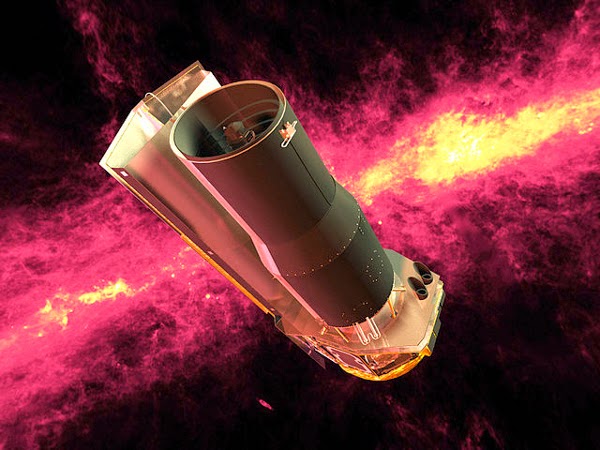Posted on Thursday, May 29, 2014
 |
| Artist's conception of Spitzer Space Telescope. Credit: NASA/JPL-Caltech |
Spitzer observes the universe in the infrared wavelengths, although since 2009, it has only been able to work in near-infrared, because of having run out of cryogenic helium that could cool the sensors well enough.
Unfortunately NASA's budget is constrained, since some of their priorities need a lot of funding - International Space Station, constructing the heavy-lift Space Launch System, and ofcourse also James Webb Space Telescope. Although Spitzer is still useful for scientific observations, the telescope would have to be shut down at some time anyway, as it is moving further away from the Earth, as it is in an Earth-trailing orbit around the Sun and as the distance between the Earth and Spitzer increases, communication gets more difficult, and when it's in the opposite part of its orbit behind the sun, communication will be impossible.
Spitzer has been used for studying exoplanets and their atmospheres, brown dwarfs, and also galaxies.
Even when the telescope will be shut down, we know what is going to replace its observations in the infrared - the James Webb Space Telescope, scheduled to be launched in 2018.